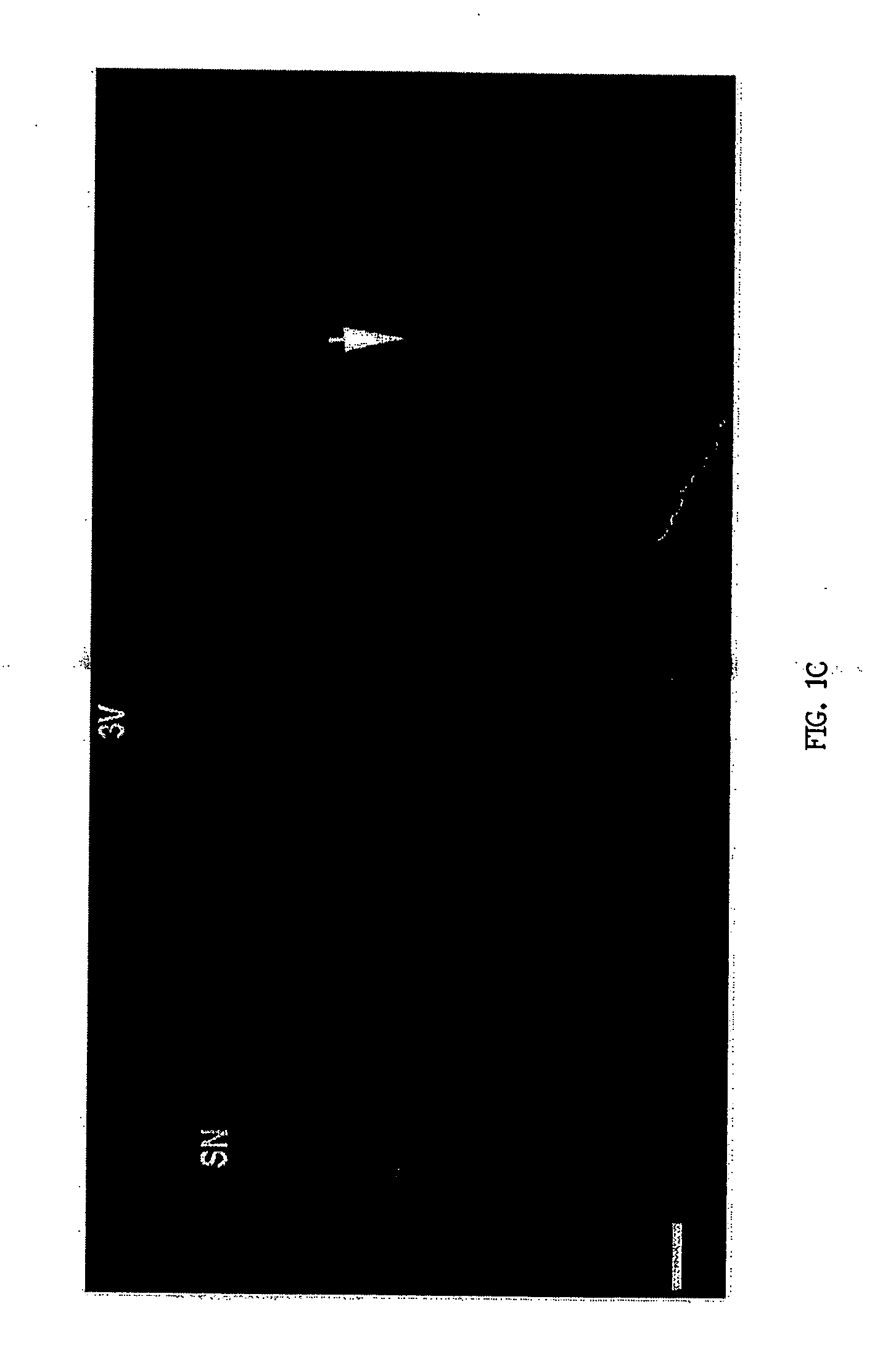Methods and compositions for treating Parkinson's disease
a technology for parkinson's disease and compositions, applied in drug compositions, peptide/protein ingredients, genetic material ingredients, etc., can solve the problem of limiting the rate of th enzymatic activity in the biosynthesis of dopamine, difficult to maintain sustained levels of dopamine, and limited in multiple respects. problem, to achieve the effect of reducing the level of dopamine, inhibiting the degeneration of dopaminergic cells, and increasing the activity of tyrosin
- Summary
- Abstract
- Description
- Claims
- Application Information
AI Technical Summary
Benefits of technology
Problems solved by technology
Method used
Image
Examples
example 1
The Biochemical Effect of Nurr1 Depletion in Adult Dopaminergic Neurons
[0192] To ascertain the biochemical effect of Nurr1 depletion in adult DA neurons, phosphorothiolated Nurr1 antisense (AS) oligonucleotides were administered to Sprague Dawley rats in two different experiments.
[0193] Briefly, rats were purchased (Harlan, St Louis Mo.), housed 2 per cage in the Baylor College of Medicine vivarium, maintained on a 12:12 h light:dark cycle (lights on at 0700 CST) with rat chow and water in excess ad libitum in accordance with Institutional and NIH Guidelines. After acclimation (7 days), animals underwent stereotaxic implantation of one or two cannulae (26 gauge, Plastics One, Roanoke Va.) using stereotaxic coordinates (G. Paxinos and C. Watson, The Rat Brain in Stereotaxic Coordinates. (Academic Press, Sydney, Australia, ed. 3, 1988)). The first cannula was placed into the substantia nigra (−5.3 mm anterior, 1.8 mm lateral, −7.4 mm ventral to the Bregma) and used for injection of ...
example 2
Nurr1 Depletion in Adult Dopaminergic Neurons Results in Significant Deficits in Motor Behavior
[0198] To determine whether the reduction in nigrostriatal DA transmission induced by Nurr1 AS was associated with locomotor abnormalities (Bjorklund, et al., (1984) Handbook of Chemical Neuroanatomy, eds. A. Bjorklund, et al.) Part 2:55-122 (Elsevier, Amsterdam)) behavioral analyses were undertaken following unilateral Nurr1 oligonucleotide treatment. Stainless steel cannulae were surgically implanted by stereotaxis in the dorsal SN on the animal's right side. During the subsequent 7 day recovery, the rats were familiarized with the examiner grip and ramp trained. Behavioral testing for baseline performance was conducted on the day before oligonucleotides were administered; testing for experimental effect was performed 2 days after oligonucleotides were given.
[0199] In all behavioral experiments, chronically cannulated rats (n=28) were injected unilaterally with oligonucleotides into th...
example 3
Construction and Production and Bioactivity of an Adeno-associated Virus (AAV) Vector for Gene Transfer
[0206] Since Parkinson's disease is characterized by progressive degeneration of DA neurons in the SN that project to the striatum and since current therapies do not prevent this degeneration, restoration of DA neurons and their production of dopamine is a major therapeutic goal. To determine whether Nurr1 can rescue DA neurons from 6-OHDA induced degeneration, a replication-defective adeno-associated viral vector carrying the Nurr1 cDNA (AAv.Nurr1) under the control of the constitutively active cytomegalovirus (CMV) promoter was constructed.
[0207] For generation of AAv Vectors, both AAv vectors AAv-CMV-LacZ and AAv-CMV-Nurr1 were generated by triple transfection into 293 cells. The AAv cis-acting plasmid pAAv-CMV-LacZ was described previously (K. J. Fisher, et al., J. Virol. 70:520 (1996)). The cis-acting plasmid pAAv-CMV-Nurr1 was made by insertion of the Nurr1 gene downstream ...
PUM
| Property | Measurement | Unit |
|---|---|---|
| Nucleic acid sequence | aaaaa | aaaaa |
| Level | aaaaa | aaaaa |
| Disorder | aaaaa | aaaaa |
Abstract
Description
Claims
Application Information
 Login to View More
Login to View More - R&D
- Intellectual Property
- Life Sciences
- Materials
- Tech Scout
- Unparalleled Data Quality
- Higher Quality Content
- 60% Fewer Hallucinations
Browse by: Latest US Patents, China's latest patents, Technical Efficacy Thesaurus, Application Domain, Technology Topic, Popular Technical Reports.
© 2025 PatSnap. All rights reserved.Legal|Privacy policy|Modern Slavery Act Transparency Statement|Sitemap|About US| Contact US: help@patsnap.com



